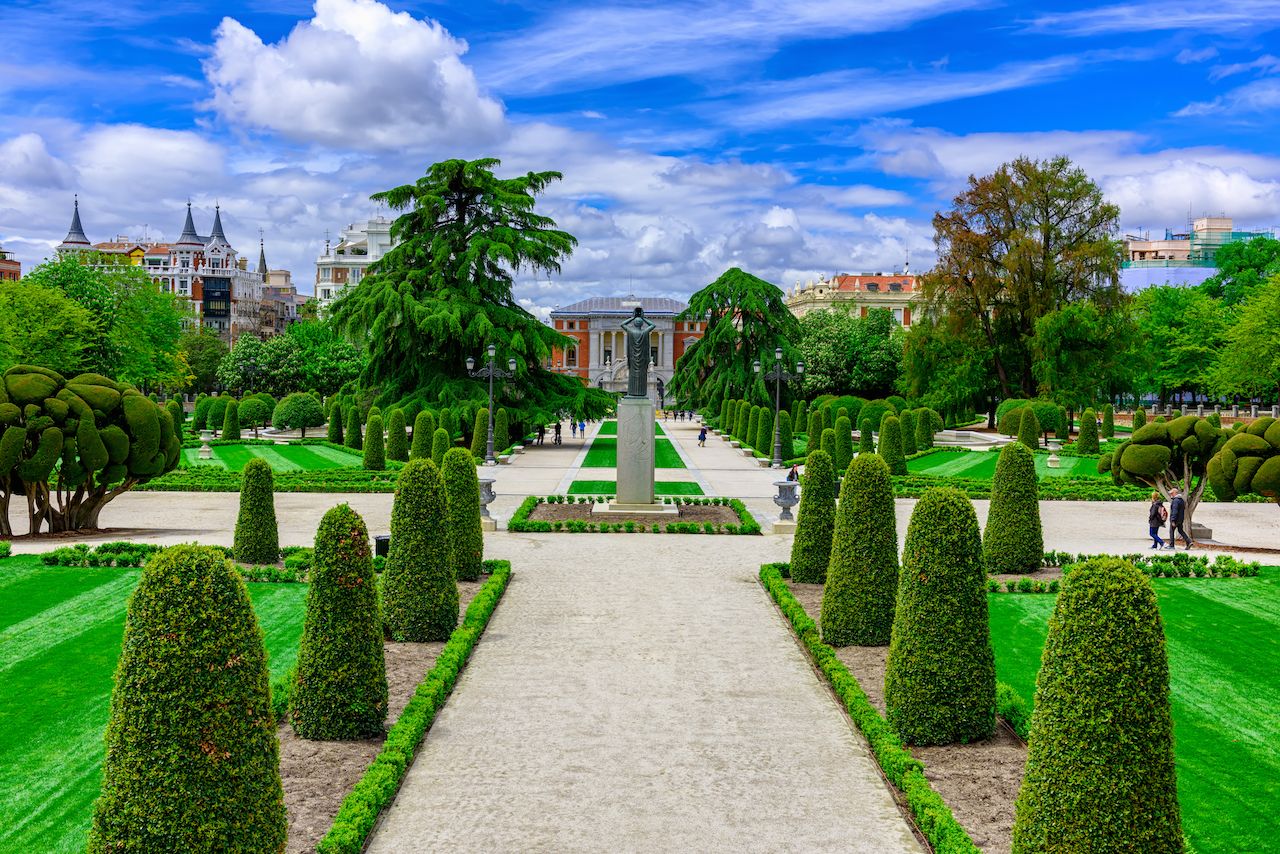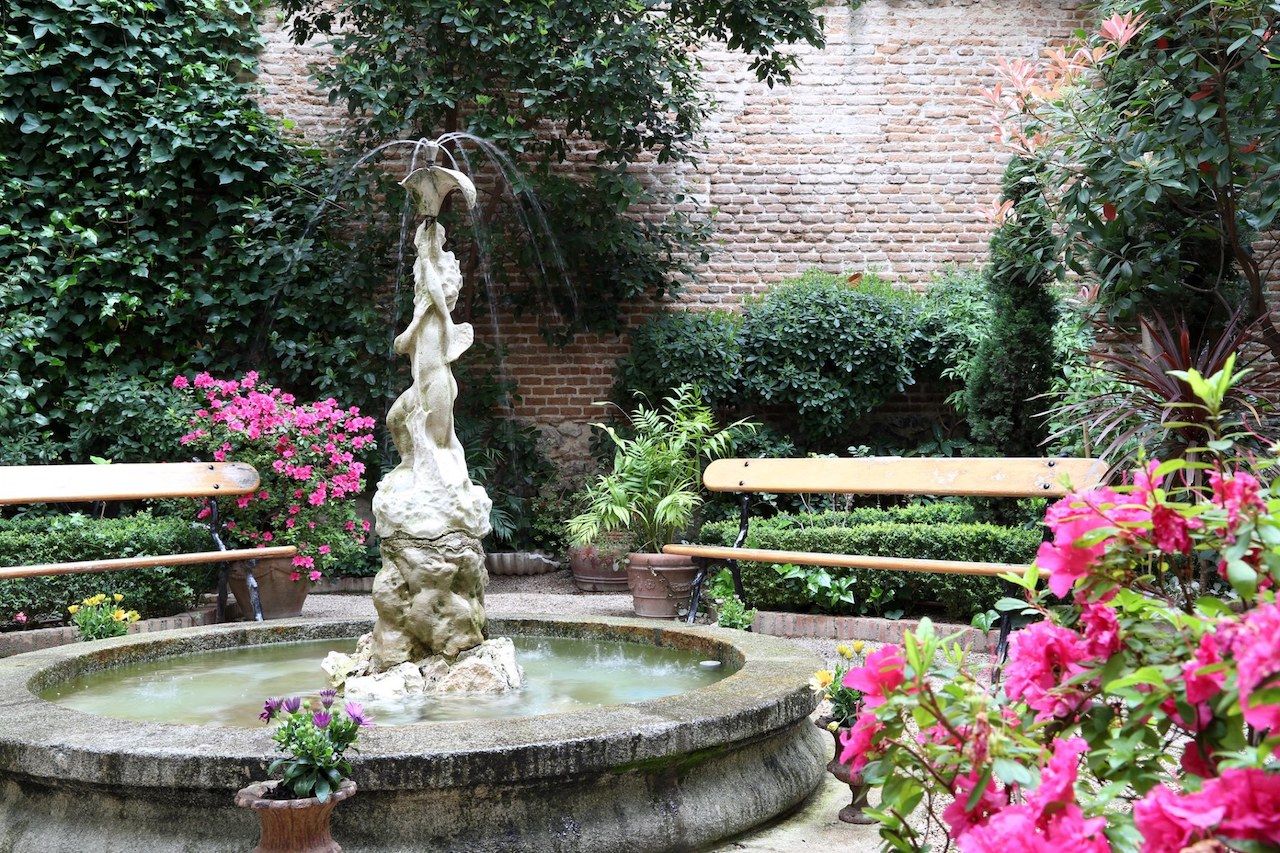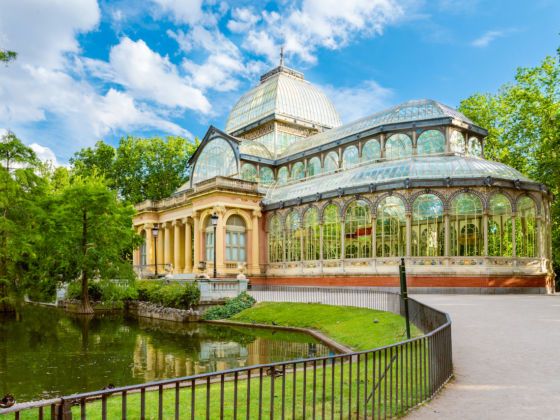Madrid’s green spaces are found throughout its museums, plazas, and even in the main train station. Like in many European capitals, nature is used to liven up a city that is filled with very imposing buildings dating back centuries. Locals love to use these green areas after work and during weekends, so the upkeep is excellent.

Photo: Catarina Belova/Shutterstock
Parque del Buen Retiro — Meandering paths and gorgeous trees — from cypress and pine to almond and chestnut — fill up Madrid’s Retiro Park, the city’s most famous and most important green space. Centrally located in Barrio Salamanca, the park’s 350 acres bring locals and tourists together throughout the year. During warmer months, you’ll find joggers, yogis, picnics, and a lot of kids. You can also find basketball courts, playgrounds, statues, and even a small crystal palace, a conservatory built in 1887.
However, the Retiro’s highlight is its lake, where you can rent a rowboat and paddle around next to dozens of ducks. It costs just under eight euros (about $8.90) per person on weekends, and the price goes down to €6 (about $6.70) from Monday to Friday. The park itself is free to explore and opens at 6:00 AM every day. From April to September, it closes at midnight. During the colder months, it closes at 10:00 PM. As the park is located right next to the Prado, a wander through its wide avenues is a pleasant breather after-hours admiring the museum’s famed oils.

Photo: Yulia Grigoryeva/Shutterstock
Atocha Station Tropical Garden — The Atocha Train Station is one of a kind. Not only is it the largest train station in Spain, but it also houses a lush tropical garden, which you’ll find as soon as you enter. It’s free to visit and open from 5:00 AM to 1:00 AM, which is when the train station operates. If you take a day trip or go to another city via train, you’ll probably leave from Atocha, so consider arriving an hour early to sit down in this garden with a good book and a cup of coffee. There’s hardly a better way to kill time than admiring a few of the garden’s thousands of plants, including hundreds of different species from around the world.

Photo: Fotoeventis/Shutterstock
Sabatini Gardens — Although these elegant gardens are lovely at any hour, they really shine at night. That’s because they are located right next to the Royal Palace, which is completely lit up in the evening, creating a very romantic backdrop. Just make sure you get there before 9:00 PM, which is when the gardens close. Of course, by day the large circular fountain and a small pond is a refreshing place for tourists and locals to cool off in summer. The Sabatini’s neoclassical style, with its geometrically arranged bushes and hedges, makes it a unique green space in Madrid. Free of charge to visit, it’s an ideal place to escape the city hustle during any day of the week.

Photo: Museo del Romanticismo/Facebook
The Museum of Romanticism Garden — This romantic jewel is part of the Museo del Romanticismo, itself housed in a 1776 ornate palace that was once belonged to a marquis. An open secret among Madrileños, the garden allows visitors to isolate themselves from the noise of the popular Malasaña neighborhood. The garden cafe here — with its patio full of plants and trees, a decorative fountain, and tables scattered here and there — is a great place for a chill afternoon coffee. Visiting the garden is free, and it’s open every day during regular museum business hours.

Photo: Sun_Shine/Shutterstock
El Cerro del Tío Pío — Just a short metro ride away from the center of Madrid, in the Vallecas district, you can find a park spread over seven hills. This local spot is popular for anyone who appreciates good views and sunsets. Since Cerro del Tio Pio is about a 45-minute metro ride away from the city center, you are not going to find hordes of people here, just a few 20-somethings chilling after work or class. What’s definitely true is that you won’t find a single tourist here. If you’re looking for a different kind of venture while visiting Madrid, pack a bottle of wine and head to the hills.

Photo: SJ Travel Photo and Video/Shutterstock
Real Jardín Botánico — Located right in front of the Prado Museum and next to the Retiro Park, this 20-acre botanical garden has been around for just under 300 years, as it was built for the royal family centuries ago. It showcased plants gathered from Spain’s colonies around the world. Today the garden contains multiple greenhouses to protect the many plant species ill-suited to Madrid’s dry climate and an “herbarium” with over a million species. Another fascinating exhibit is the garden’s bonsai collection, and you’ll find changing special exhibitions as well. The garden is always worth a visit, with the spring months perhaps the most picturesque of all. Entrance fees are €6 ($6.70).
